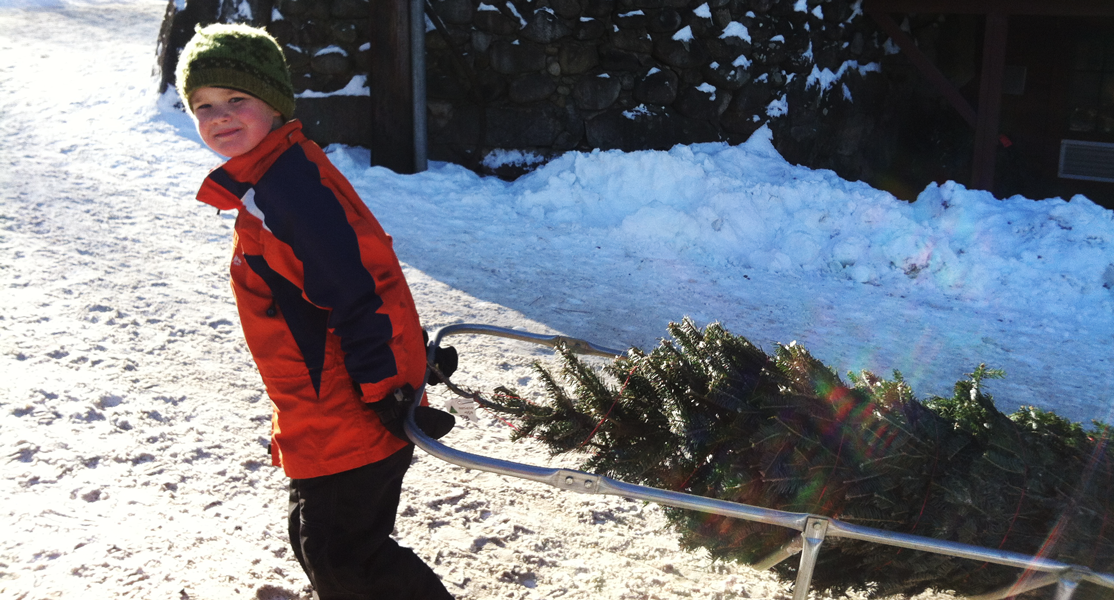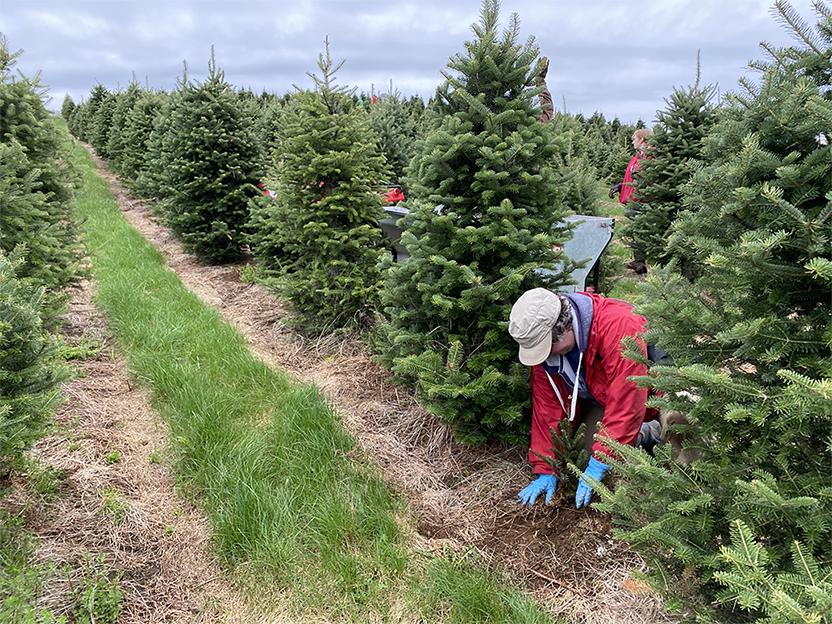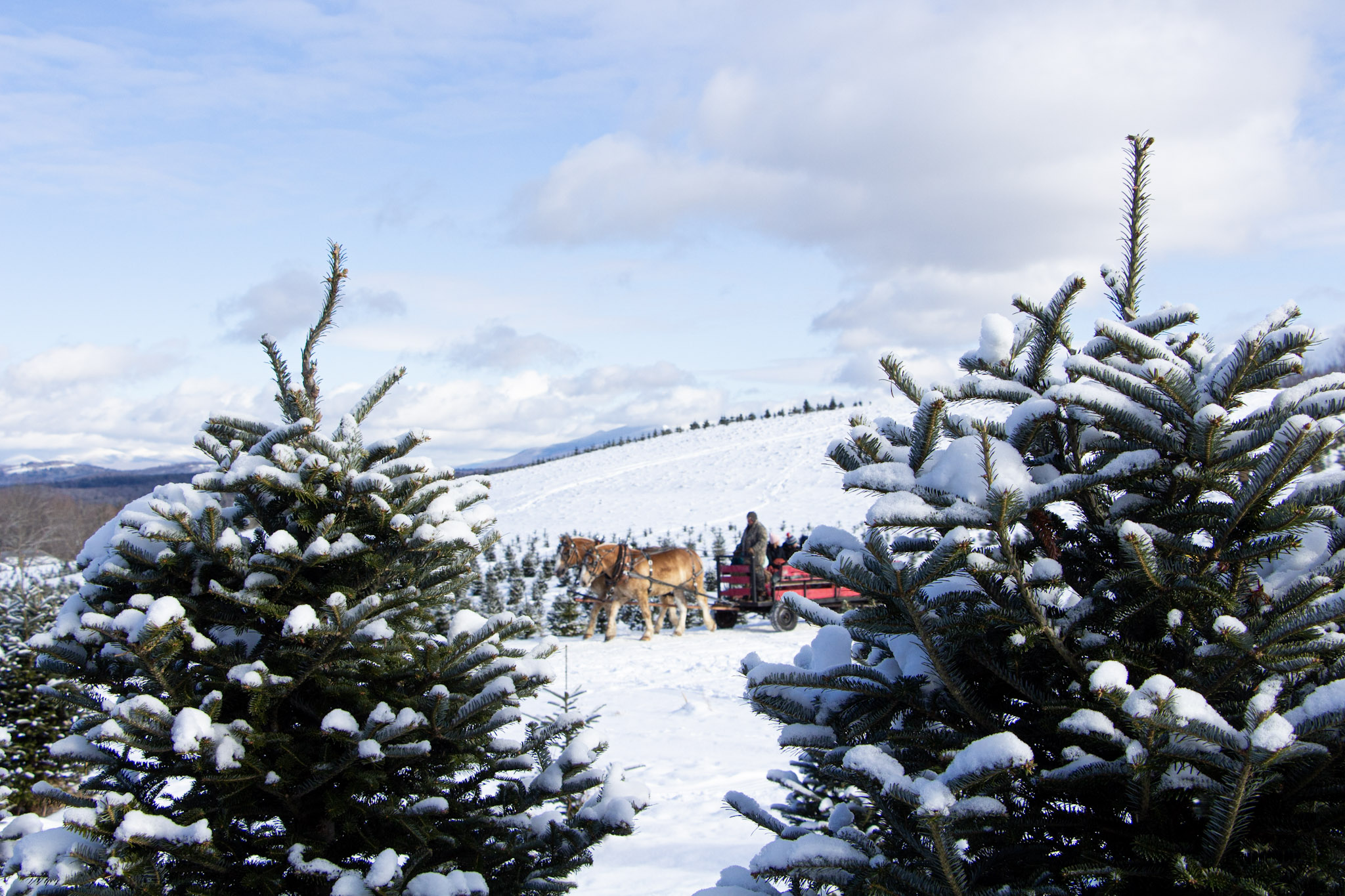- Tags:
- The Rocks,
- Working Forests,
- Something Wild
The Rocks' Christmas tree farm pictured in winter. (Photo: Anna Berry)
"Something Wild" is joint production of NH Audubon, The Society for the Protection of New Hampshire Forests & NHPR. We recommend listening to it in its original format via NHPR but a transcript of the show is also below. (Originally aired Dec. 17, 2021)
You can hear Something Wild on-air at NHPR every other Friday at 6:45 a.m. and 8:45 a.m., or subscribe to the Apple podcast here.
----------------------------------------------------
Are you new to the idea of cutting your own Christmas tree? Here are some of the basics if you decide to visit a Christmas tree farm this season plus some insight from Christmas tree farmers in N.H. on what it takes to manage a crop that takes 8-10 years to grow.
The benefits of choosing a real tree?

“While they’re growing, trees sequester carbon and release oxygen,” says Dave Anderson of the Society for the Protection of N.H. Forests. “Often, Christmas trees are grown on steep or rocky sites that don’t support other crops. Christmas tree growers plant new seedlings for every tree they harvest. Christmas tree farms stabilize soil, protect water supplies and provide wildlife habitat. They create scenic green areas for everyone to enjoy. And then there’s the 'romance.' For me, real trees make real memories.”
Many families make an annual tradition out of cutting their own tree and bringing it home.
“Like any walk in the December woods, wear good boots and warm gloves,” says Dave. Remember to pre-measure your space at home! It’s easy to misjudge the height of a tree when you’re outdoors. And you don’t need to bring your own saw; the tree farm will provide one. You will be the one doing the sawing; it's part of the fun!
Most of us only think about Christmas trees for a month or two, but Christmas tree farmers work year-round, as with any agricultural crop.
“I have so many people that turn up and ask me, you know, it must be great, what do you do for the rest of the year?” says Nigel Manley, from The Rocks, the Forest Society's North Country Program Center and Christmas tree farm in Bethlehem, N.H.
You need to fertilize trees just like any farm crop, says Manley, and you've got to do it at the right time.

“All of our trees are pruned every year by hand. So in order to do that, you've got to do it, up here, in July, August and September. We have just over 30,000 trees in the ground. You've got to get those trees pruned on time in that time frame.” Manley also reminded us of other tasks during the year, like weed control and mowing between the trees. “So we're a lot busier the rest of the year. It's just Christmas, it's stepped up a notch.”
It’s considered good luck to find a bird’s nest in a fresh-cut balsam or spruce, but it can be startling to encounter them while pruning the tree. Manley says “when we're shearing, the birds come flying out — it really scares you when you're doing it because they'll sit on that nest basically until you just start pruning the tree and then they come out. It doesn't hurt them at all. They just go back in afterwards."
Balsam and Fraser Fir are two of the most popular varieties in N.H. You can even get a Fraser crossed with a Balsam, called a “Fralsam,” which originated at the Weir Tree Farm in Colebrook.
But those are not the only kinds of trees to choose from. Jeff Taylor at Windswept Mountains View Christmas Tree Farm. in Richmond N.H. has around 18 varieties of trees, and they come from all over the world. “I have Korean, and I have Korean crossed with Balsam, and I have Korean crossed with vetch fir, which is a Japanese fir. I have Nikko Fir, which is a Japanese fir. I have King Boris from the Balkans, I have Greek fir, I have Nordmann fir from Germany. and I have a few vetch left, a beautiful fir.”
With so many options, how do you choose? Needle length, texture, density of branches, scent, and color are all things to consider.
“We have a lot of customers that like to try something different every year, and then we have others that get hooked on them for a while,” says Taylor. “For example, the Grand fir from the Northwest, people love that smell. It's a citrus odor. Turkish has become very popular. It's an interesting tree, has a long needle, very strong branch, and people like it because they tend to be a little more open, but they support heavy ornaments.”
Once you get your tree home, get the tree in water as soon as possible. Most can go 6 to 8 hours after cutting the trunk and still take up water. The general rule is one quart of water per inch of stem diameter and replenish it often!
There are plenty of videos showing how quickly a dried-out tree can go up in flames. By all means, keep it away from wood stoves and heaters, as well as heating vents. And remember: turn off your Christmas tree lights at night and when you’re not around.

Real Christmas trees are biodegradable. After the holidays they can be chipped and used as mulch or tucked near backyard bird feeders to provide perches and winter shelter. Some communities collect trees for use to control soil erosion or to sink in ponds as a refuge for fish. Recycling trees back to nature closes the loop.
- Could you guess the different varieties of trees in the photo above? From left to right: Turkish, Korean, Grand Fir, Fraser, and Nordmann.
- Check out more photos of different Christmas tree varieties at the Christmas Tree Promotion Board tree guide.
We get editing help from Taylor Quimby. Something Wild is a joint production of New Hampshire Audubon, the Society for the Protection of New Hampshire Forests, and NHPR.
